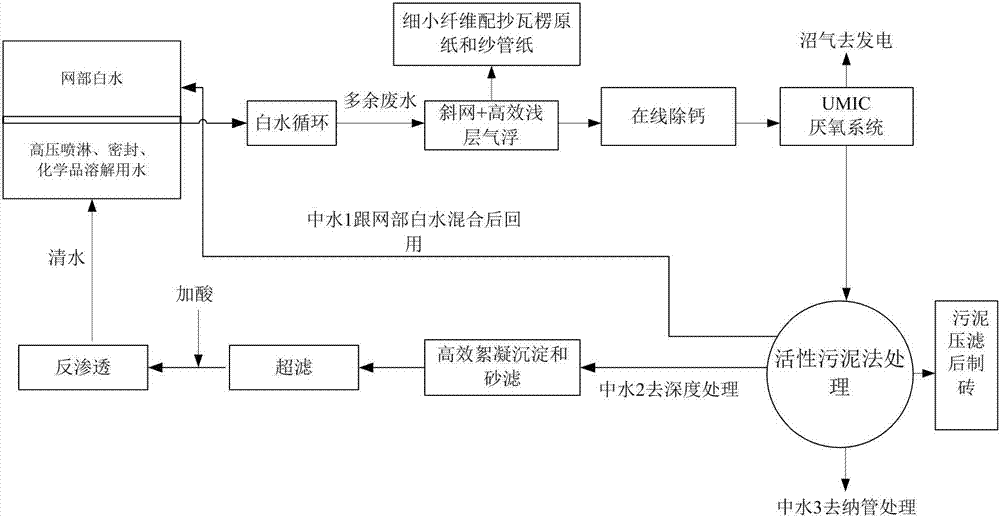Low-emission papermaking wastewater processing and comprehensive utilization method
A papermaking wastewater, low-emission technology, applied in the process of wastewater treatment, water/sewage treatment, water/sewage multi-stage treatment, etc. effect, elimination of pollution, effect of reducing dosage
- Summary
- Abstract
- Description
- Claims
- Application Information
AI Technical Summary
Problems solved by technology
Method used
Image
Examples
Embodiment Construction
[0025] In order to make the object, technical solution and advantages of the present invention more clear, the present invention will be further described in detail below in conjunction with the examples. It should be understood that the specific embodiments described here are only used to explain the present invention, not to limit the present invention.
[0026] The application principle of the present invention will be described in detail below in conjunction with the accompanying drawings.
[0027] Such as figure 1 As shown, the low-emission papermaking wastewater treatment and comprehensive utilization method provided by the embodiment of the present invention includes the following steps:
[0028] S101: The white water in the wire part of the paper machine is recycled by the white water inside the production. The excess papermaking wastewater is first processed by inclined wire and high-efficiency shallow air flotation to recover fine fibers and fillers for the producti...
PUM
 Login to View More
Login to View More Abstract
Description
Claims
Application Information
 Login to View More
Login to View More - Generate Ideas
- Intellectual Property
- Life Sciences
- Materials
- Tech Scout
- Unparalleled Data Quality
- Higher Quality Content
- 60% Fewer Hallucinations
Browse by: Latest US Patents, China's latest patents, Technical Efficacy Thesaurus, Application Domain, Technology Topic, Popular Technical Reports.
© 2025 PatSnap. All rights reserved.Legal|Privacy policy|Modern Slavery Act Transparency Statement|Sitemap|About US| Contact US: help@patsnap.com


